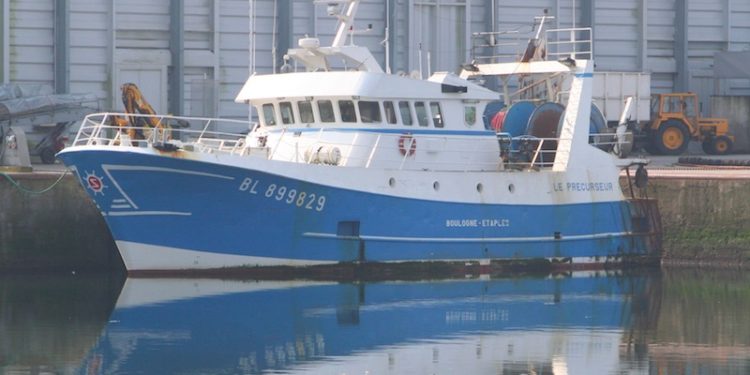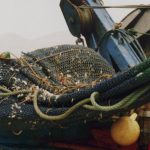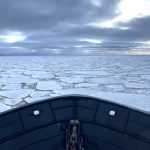In calling on Ministers at next week’s December Council to take into account all CFP objectives and the final phase of the landing obligation implementation in setting next year’s TACs and quotas, the European Association of Fish Producers Organisations (EAPO) has set out its position.
EAPO’s position paper lays out observations and recommendations relating to 25 commercial stocks to Council members, and EAPO is calling on the Council of Fisheries Ministers to set the 2019 TACs and quota at levels that enable fishing activities to achieve economic, social and employment benefits, contributing to the food supply and taking into account long term ecologic sustainability.
‘We are offering constructive suggestions to the Council to take decisions addressing the need for a long term sustainable European fisheries sector. These are based on our concern that only adopting the measures proposed by the Commission will not entirely achieve this,’ said EAPO president Pim Visser.
He commented that the position paper sent to the ministers also highlights that the full implementation of the landing obligation remains a challenge with an unavoidable negative impact on fishing communities. The EU member states’ fisheries ministers are called upon to take decisions leading to appropriate solutions for the risks that sustainable fisheries are prematurely and unnecessarily brought to halt.
Objectives
EAPO has taken the opportunity to voice a reminder that the Commission’s proposals focus on the biological objectives of Article 2.2 of the CFP.
This states: The CFP shall apply the precautionary approach to fisheries management, and shall aim to ensure that exploitation of living marine biological resources restores and maintains populations of harvested species above levels which can produce the maximum sustainable yield.
In order to reach the objective of progressively restoring and maintaining populations of fish stocks above biomass levels capable of producing maximum sustainable yield, the maximum sustainable yield exploitation rate shall be achieved by 2015 where possible and, on a progressive, incremental basis at the latest by 2020 for all stocks.
‘The proposals disregard those other objectives of the CFP dealing with economic, social and employment benefits, and contributing to the availability of food supplies as stated in Article 2.1 of the CFP. The Commission has an obligation to promote all the CFP objectives and not rely on the Council of Fisheries Ministers to address these equally crucial issues,’ EAPO said, quoting Article 2.1, which sets out; The CFP shall ensure that fishing and aquaculture activities are environmentally sustainable in the long-term and are managed in a way that is consistent with the objectives of achieving economic, social and employment benefits, and of contributing to the availability of food supplies.
LandingObligation
‘The landing obligation will enter its final phase in 2019 when all species subject to TACs and quotas become subject to Article 15 of the CFP,’ Pim Visser said.
‘The Commission is attempting to juggle the landing obligation and fishing all species affected at MSY which will prove to be extremely difficult if not impossible. The prospect of “choke species” paralysing the fishing industry is a very credible threat with knock-on effects for a vast array of sustainable fisheries, hitherto able to function normally, being caught in the slip-stream.’
According to EAPO’s position statement, implementation of the landing obligation, as laid out in the Commission’s proposals, will have large negative consequences for the European whitefish and pelagic sectors as the “choke species” factor could trigger closure of most fisheries in the early months of 2019.
‘There is a significant risk of such closures extending to valuable pelagic fisheries. It is not economically sustainable for entire sectors of these fleets to tie-up for such periods and would have disastrous knock-on effects for the processing industry, markets at home and abroad and peripheral fishing communities.’
‘We are also concerned that the Commission’s proposal envisages that CCTV is the only effective tool for the implementation of the landing obligation. We fully support accurate documentation of all fishing trips, but we do not accept that the only way of doing this is by means of CCTV. This is also recognised in article 15(13) (see below) of the CFP which clearly states that CCTV is not the only option,’ he said.
Article 15 (13.) states; For the purpose of monitoring compliance with the landing obligation, Member States shall ensure detailed and accurate documentation of all fishing trips and adequate capacity and means, such as observers, closed-circuit television (CCTV) and others. In doing so, Member States shall respect the principle of efficiency and proportionality.
Approach for Setting Fishing Opportunities
EAPO reports that the Commission insists that all its proposed fishing opportunities relate to the scientific advice which it receives, by and large, from ICES. This advice compiled by ICES is data-based and should provide reliable forecasts of stock size, fishing mortality, recruitment and catches.
‘Unfortunately, there have been several instances in recent times of quite inaccurate estimates by ICES leading to incorrect advice which has had serious consequences for the fishing industry and its ancillary industries. It is essential that ICES put in place as a matter of urgency a fit for purpose quality assurance system in which the Commission, managers and stakeholders have confidence.’
By-Catch-Only TACs
Zero TACs have been used for small number of species for some years past but EAPO warns that such zero TACs would have the effect of creating instant “choke species” with the full implementation of the landing obligation in 2019.
‘To offset the serious socio-economic consequences for large sectors of the fishing industry, the Commission proposes by-catch only TACs which would allow some of those species to be caught and landed. However, the by-catch TACs (e.g. whiting in areas 5b,6 and 7a, cod in 6a and in the Celtic Sea, and plaice in area 7hjk) in question are in no way adequate to be effective and would not prevent premature closure of a vast array of fisheries in those areas. Furthermore as the by- catches are not allocated it will lead to a race to fish and early closures of a vast array of sustainable fisheries,’ EAPO states.









